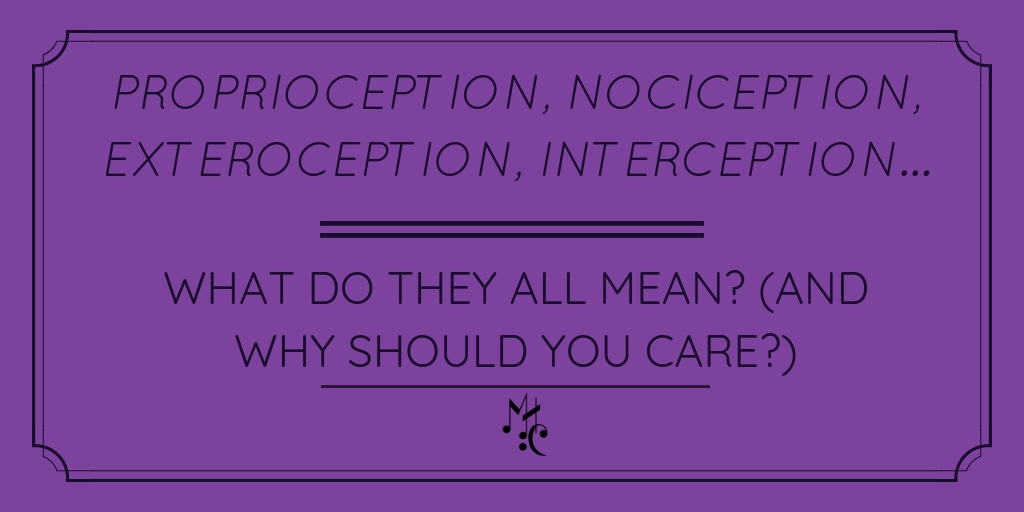Proprioception, Nociception, Exteroception, Interoception--- What do they all mean?
Proprioception, nociception, exteroception, interoception: these all words that have been popping up on the movement radar screen for a while, but what do they all mean? And why do they sound so similar? Let's harken back to Latin for a bit: cept is a root word, meaning taken or seized, and ion is a suffix meaning action or condition. There are a plethora of words ending with ception : exception, inception, reception... so how do they all connect back to these first three words?
To start with, let’s look at two words that are often used interchangeably but mean different things: proprioception and kinesthesia. According to the American Heritage Science Dictionary, proprioception is “The unconscious perception of movement and spatial orientation arising from stimuli within the body.” The root proprio, means one's own. In other words, it’s the awareness of body position and location. Kinesthesia is instead the “Sense perception of movement, the muscular sense,” meaning an awareness of how movement is performed. (The root kines/kinesis means movement) Proprioception is the result of sensory input throughout the body (skin, fascia, muscle, joint receptors), which then sends feedback to the spinal cord and brain. Kinesthesia however is more behavioral in origin, and your body is more actively involved in assessing movement patterns and making adjustments. In yoga and other movement disciplines, we need both our proprioceptive sense and kinesthetic abilities to execute tasks.
Nociception however is the sensory nerve cell input responding to potentially hazardous stimuli, AKA. how we perceive pain, tissue damage, potential threats, etc. (Noci as a root refers to pain and injury).
Exteroception, is the sensitivity to stimuli outside the body, AKA. how you perceive your environment, or in other terms, your inclusive attention. (Ex is the Latin root for outside) In musical performance, we often have some sense of our environment- the room, the temperature, the people in it, etc, while performing, thus exteroception. The same is true for just being in the world- walking, practicing indoors or outdoors, etc.
Interoception, thus, is our felt experience of the internal workings of the body, such as digestion, breath regulation, etc.
Although these are just definitions, hopefully this clears up some of the ambiguities of these words and how you use these words (and actions of the somatosensory cortex) in daily living.



